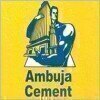Filter interviews by
Clear (1)
Dalmia Bharat Cement Technical Service Engineer Interview Questions, Process, and Tips
Dalmia Bharat Cement Technical Service Engineer Interview Experiences
3 interviews found
I applied via Referral and was interviewed before Jun 2022. There were 2 interview rounds.

(6 Questions)
- Q1. What are the types of cement available in the market?
- Ans.
Types of cement include Portland cement, white cement, rapid hardening cement, low heat cement, sulfate resisting cement, etc.
Portland cement is the most common type used in construction
White cement is used for architectural purposes
Rapid hardening cement sets quickly
Low heat cement generates less heat during hydration
Sulfate resisting cement is used in areas with high sulfate content in soil or water
- Q2. What are the Tests on fresh concrete and hardened concrete ?
- Ans.
Tests on fresh concrete include slump test, air content test, and temperature test. Tests on hardened concrete include compressive strength test, flexural strength test, and durability test.
Tests on fresh concrete: slump test, air content test, temperature test
Tests on hardened concrete: compressive strength test, flexural strength test, durability test
- Q3. What are the main reason for cracks development in slab?
- Ans.
The main reasons for cracks development in slabs include shrinkage, settlement, overloading, and poor construction practices.
Shrinkage of concrete during curing process
Settlement of underlying soil
Overloading beyond the design capacity
Poor construction practices such as inadequate reinforcement or improper curing
Temperature changes causing expansion and contraction
- Q4. How do you test cement on site?
- Ans.
Cement can be tested on site using various methods such as slump test, compressive strength test, and temperature monitoring.
Perform a slump test to measure the consistency and workability of the cement mixture.
Conduct a compressive strength test by casting cubes or cylinders of cement and testing their strength after a specified curing period.
Monitor the temperature of the cement during mixing and curing to ensure pro
- Q5. What are the IS Codes for different types of cement?
- Ans.
IS Codes for different types of cement
IS 269: Ordinary Portland Cement
IS 455: Portland Slag Cement
IS 1489: Portland Pozzolana Cement
IS 8041: Rapid Hardening Portland Cement
IS 12330: Sulphate Resisting Portland Cement
- Q6. How do you calculate the target strength of concrete?
- Ans.
The target strength of concrete is calculated using the characteristic compressive strength of concrete and the standard deviation.
Calculate the characteristic compressive strength of concrete based on the mix design.
Determine the standard deviation of the concrete mix.
Use the formula: Target strength = Characteristic strength + (1.65 * Standard deviation)
For example, if the characteristic strength is 30 MPa and the st...
Interview Preparation Tips
- Cement
- Concrete
- IS codes
I applied via Recruitment Consultant and was interviewed in Sep 2021. There were 3 interview rounds.
Interview Questionnaire
3 Questions
- Q1. 1 day strength of previous company cement.
- Q2. Complaint handling questions.
- Q3. Manufacturing process of cement
- Ans.
The manufacturing process of cement involves several stages including quarrying, crushing, grinding, blending, and burning.
Quarrying: Limestone and clay are extracted from quarries.
Crushing: The extracted materials are crushed into smaller pieces.
Grinding: The crushed materials are further ground into a fine powder.
Blending: The powdered materials are mixed in the right proportions to create the desired cement composit...
Interview Preparation Tips
I applied via Naukri.com and was interviewed before Jun 2021. There were 2 interview rounds.

(2 Questions)
- Q1. Procedure of Cement manufacturing
- Ans.
Cement manufacturing involves several stages including crushing, blending, heating, and grinding raw materials.
Raw materials such as limestone, clay, and sand are crushed and blended together
The mixture is heated in a kiln to form clinker
The clinker is then ground with gypsum to produce cement
The cement is stored in silos before being shipped for use
- Q2. Bar bending schedule
Interview Preparation Tips
Top trending discussions






Interview questions from similar companies

Technical Service Engineer Interview Questions & Answers
The Ramco Cementsposted on 10 Sep 2024
I applied via Recruitment Consulltant and was interviewed in Mar 2024. There was 1 interview round.
(1 Question)
- Q1. Fineness of cement?
- Ans.
Fineness of cement refers to the particle size of the cement particles.
Fineness is measured by the surface area of cement particles per unit mass.
It affects the rate of hydration and strength development of cement.
Finer cement particles increase the water demand and workability of concrete.
ASTM C204 and AASHTO T153 are common methods to determine fineness of cement.
Interview Preparation Tips

I was interviewed in Jul 2022.

(2 Questions)
- Q1. Cement IS code, test report,,
- Q2. Slump cone, cube casting , process
Interview Preparation Tips
- Contraction
I'm interested in up , all City.

Technical Service Engineer Interview Questions & Answers
Ambuja Cementsposted on 6 Jul 2021
Interview Questionnaire
7 Questions
- Q1. What is the water cement ratio?
- Ans.
The water cement ratio is the ratio of the weight of water to the weight of cement used in a concrete mix.
It is an important factor in determining the strength and durability of concrete.
A lower water cement ratio results in stronger and more durable concrete.
The water cement ratio can vary depending on the type of concrete mix and its intended use.
For example, a typical water cement ratio for general-purpose concrete ...
- Q2. What is the concrete?
- Ans.
Concrete is a composite material made of cement, water, and aggregates.
It is used in construction for building foundations, walls, and floors.
The strength and durability of concrete can be improved by adding reinforcing materials like steel.
Different types of concrete are used for different purposes, such as high-strength concrete for bridges and precast concrete for building components.
Concrete can also be decorative,...
- Q3. What are the technical services to the customers??
- Ans.
Technical services to customers refer to the support and assistance provided by a company to its clients regarding their technical issues.
Installation and setup assistance
Troubleshooting and problem-solving
Maintenance and repair services
Software updates and upgrades
Training and education on product usage
24/7 technical support
Remote assistance and monitoring
Customization and integration services
- Q4. How many sites visited by you in daily basis?
- Q5. How much market share of Premium product in your areas?
- Ans.
I do not have the available data.
N/A
- Q6. What is the potential of your market and share of your product??
- Ans.
The potential of our market is significant and our product has a competitive share.
Our market is growing rapidly and has a high demand for our product.
We have a strong presence in the market and are continuously expanding our reach.
Our product has a competitive edge over similar products in the market.
We have a loyal customer base and are constantly acquiring new customers.
Our market share is expected to increase in th...
- Q7. What is the ℅ of premium product in the whole target?
- Ans.
I don't have the available data to answer this question.
Sorry, I don't have access to the target data to provide an accurate answer.
Without the necessary information, I cannot provide a percentage for premium products in the target.
Unfortunately, I am unable to answer this question without the relevant data.

Technical Service Engineer Interview Questions & Answers
Ambuja Cementsposted on 27 Feb 2022
I applied via Approached by Company and was interviewed in Jan 2022. There were 2 interview rounds.

Interview Preparation Tips

Technical Service Engineer Interview Questions & Answers
Ambuja Cementsposted on 12 Jan 2023
I applied via Recruitment Consulltant

(2 Questions)
- Q1. Bending moment diagram
- Ans.
A bending moment diagram shows the variation of bending moment along the length of a beam.
Bending moment is the product of force and distance from a point
Positive bending moment causes beam to bend concave upwards
Negative bending moment causes beam to bend concave downwards
Bending moment diagram helps in determining the maximum bending moment and shear force
Bending moment diagram is useful in designing and analyzing be
- Q2. Cement manufacturers process
(1 Question)
- Q1. Salary expectation and polices
Interview Preparation Tips

Technical Service Engineer Interview Questions & Answers
Ambuja Cementsposted on 10 Nov 2022
I applied via Approached by Company and was interviewed before Nov 2021. There were 2 interview rounds.

(2 Questions)
- Q1. Aptitude given first and than after that face to face interview
- Q2. Question related to sales generation and marketing skills
Interview Preparation Tips

Technical Service Engineer Interview Questions & Answers
Ambuja Cementsposted on 19 May 2024
I applied via Campus Placement and was interviewed in Nov 2023. There were 4 interview rounds.
Technical written test.
(1 Question)
- Q1. Technical interview related to cement
(1 Question)
- Q1. Again a technical round with senior
(1 Question)
- Q1. Salary discussion and other details.
Dalmia Bharat Cement Interview FAQs
Recently Viewed
Tell us how to improve this page.
Dalmia Bharat Cement Interviews By Designations
- Dalmia Bharat Cement Sales Officer Interview Questions
- Dalmia Bharat Cement Technical Support Engineer Interview Questions
- Dalmia Bharat Cement Executive Interview Questions
- Dalmia Bharat Cement Mechanical Maintenance Engineer Interview Questions
- Dalmia Bharat Cement Area Sales Officer Interview Questions
- Dalmia Bharat Cement Assistant Manager Interview Questions
- Dalmia Bharat Cement Graduate Engineer Trainee (Get) Interview Questions
- Dalmia Bharat Cement Area Sales Manager Interview Questions
- Show more
Interview Questions for Popular Designations
- Service Engineer Interview Questions
- Customer Service Executive Interview Questions
- Customer Service Associate Interview Questions
- Technical Service Specialist Interview Questions
- Senior Technical Services Specialist Interview Questions
- Technical Lead Interview Questions
- Advisory Technical Services Specialist Interview Questions
- Service Advisor Interview Questions
- Show more
Dalmia Bharat Cement Technical Service Engineer Interview Process
based on 2 interviews
Interview experience
Interview Questions from Similar Companies
Fast track your campus placements
Dalmia Bharat Cement Technical Service Engineer Reviews and Ratings
based on 36 reviews
Rating in categories
|
Assistant Manager
398
salaries
| ₹0 L/yr - ₹0 L/yr |
|
Senior Executive
297
salaries
| ₹0 L/yr - ₹0 L/yr |
|
Deputy Manager
295
salaries
| ₹0 L/yr - ₹0 L/yr |
|
Sales Officer
229
salaries
| ₹0 L/yr - ₹0 L/yr |
|
Technical Service Engineer
187
salaries
| ₹0 L/yr - ₹0 L/yr |

UltraTech Cement

Ambuja Cements

ACC

Shree Cement
- Home >
- Interviews >
- Dalmia Bharat Cement Interview Questions >
- Dalmia Bharat Cement Technical Service Engineer Interview Questions
















